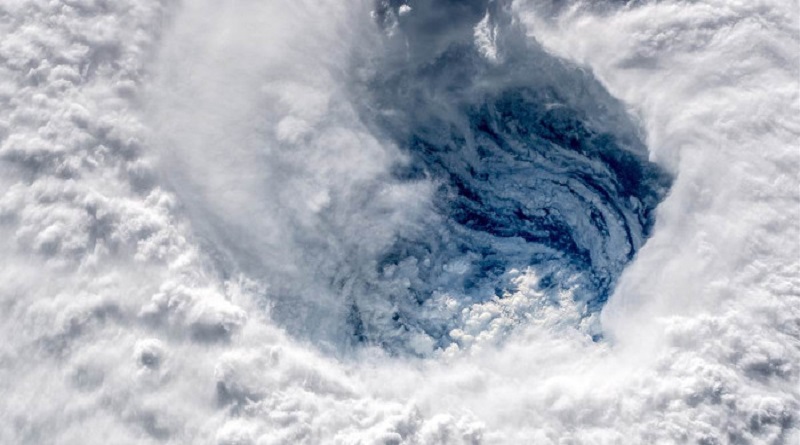How cyclones, hurricanes increase forced displacement in the Caribbean region- UNICEF
The Child Alert attributes the dramatic increase in forced displacement – from 150,000 to an estimated 761,000 children between 2014 and 2018 – to a series of catastrophic tropical cyclones or hurricanes that hit the Caribbean region.
The report outlines a number of UNICEF-supported initiatives that are under way to protect children and families, concluding with two calls for action, specifically addressing climate change impacts, and the plight of uprooted children.
A related UNICEF factsheet outlines some broader impacts of environmental degradation and climate change at global level, as well as some response strategies.
The UN Children’s Fund (UNICEF) issued a report titled, ‘Children Uprooted in the Caribbean: How Stronger Hurricanes Linked to a Changing Climate are Driving Child Displacement,’ which takes stock of the links between a changing climate, extreme weather events and forced displacement of children and families in the 29 Caribbean small island developing States (SIDS). Published as part of the UNICEF Child Alert series, the report highlights research showing a six-fold rise in the number of children displaced by storms in the Caribbean between 2014 and 2018, compared to the previous five-year period.
The Child Alert attributes the dramatic increase in forced displacement – from 150,000 to an estimated 761,000 children – to a series of catastrophic tropical cyclones or hurricanes that hit the Caribbean region. It notes, for instance, that more than 400,000 children were displaced by hurricanes during 2017 alone. The publication underscores that children are particularly vulnerable if their parents are killed or if they are separated from their families. It also highlights the increased risk that children face from opportunistic diseases such as measles and respiratory infections, which can thrive in overcrowded conditions in emergency shelters.
During the launch of the report in December 2019, during the UN Climate Change Conference in Madrid, Spain, UNICEF Executive Director Henrietta Fore noted that the findings are “a stark reminder that the climate crisis is a child rights crisis,” and urged governments and the international community take urgent steps “to mitigate its most devastating consequences.”
The climate crisis is a child rights crisis.
The report outlines a number of UNICEF-supported initiatives that are underway to protect children and families, concluding with two calls for action, specifically addressing climate change impacts, and the plight of uprooted children. On climate action, the report underlines the need to: put children at the heart of climate change strategies and response plans; protect children from the impacts of climate change and environmental degradation; recognize children as agents of change; and reduce emissions and pollution.
The report calls for six actions to protect all refugee and migrant children: Address the root causes of disasters, protracted conflicts, persistent violence and extreme poverty that drive families from their homes; Provide displaced children with protection and access to essential services like education and healthcare; Make efforts to keep displaced families together, and ensure that uprooted children have legal status if they are forced to cross borders; End the detention of refugee and migrant children by creating practical alternatives; Combat xenophobia and discrimination; and Protect uprooted children from exploitation and violence.
A related UNICEF factsheet outlines some broader impacts of environmental degradation and climate change at global level, as well as some response strategies, including:
Around 503 million children live in areas at extremely high risk of floods due to extreme weather events and rising sea levels. Investments in disaster risk reduction (DRR), for example in early warning systems, can help prepare communities to protect children during extreme weather events.
Around 160 million children live in areas experiencing high levels of drought, with an estimated 1 in 4 children projected to live in areas of extreme water stress by 2040. While technologies to effectively manage water exist, greater investment is needed to scale up techniques that can help better locate, extract and sustainably manage water.
Weather-related disasters “increase the risk for girls to drop out of school and be forced into marriages, trafficking, sexual exploitation and abuse.” Educating girls enhances their awareness of climate change and increases their resilience and capacity to cope with its impacts.
Almost 90% of the “burden of disease attributable to climate change is borne by children under the age of five.” Better prediction capabilities and support to health workers and systems on the ground facilitate greater accuracy in mapping and predicting disease prevalence, and disrupting transition mechanisms and pathways.
Approximately 300 million children globally are exposed to toxic air that is six times above the international limits set by the World Health Organization (WHO), which has an immediate and long-term detrimental effect on their health, and brain function and development. “Cleaner, renewable sources of energy, affordable access to public transport, more green spaces in urban areas and better waste management that prevents the open burning of harmful chemicals can help improve the health of millions.”



